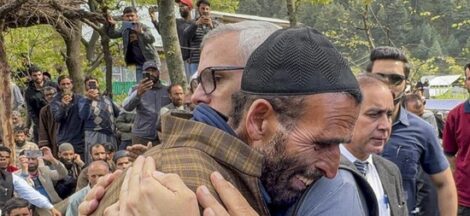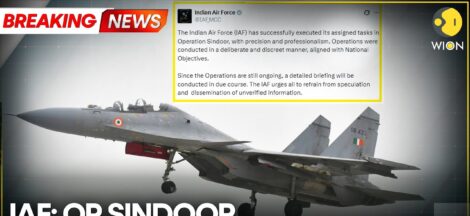Union Law Minister Arjun Ram Meghwal is increasingly viewed as a leading contender to assume the role of the Bharatiya Janata Party’s national president, as the party gears up for a key organisational shift ahead of pivotal state elections and the broader strategic build-up to the next general election. Alongside Meghwal, other senior Union ministers, notably Manohar Lal Khattar, Bhupender Yadav, and Dharmendra Pradhan, are reportedly under active consideration, signalling a calculated recalibration of leadership dynamics within the party’s apex structure.
Party insiders and political observers indicate that the BJP’s leadership is prioritising a seamless transition that will reinforce the organisation’s grassroots machinery while aligning with its broader vision of inclusive representation. Meghwal, hailing from Rajasthan and belonging to the Scheduled Caste community, brings a combination of administrative experience, loyalty to the party’s ideological core, and a moderate public image, attributes considered crucial as the BJP seeks to expand its social coalition.
Speculation surrounding the leadership change has intensified following hints from senior party officials suggesting that the incumbent national president J.P. Nadda may transition to a cabinet role, especially after his extended term to oversee the 2024 general elections. According to those familiar with internal deliberations, a new appointment could materialise once the new Modi government consolidates its position and reshuffles the council of ministers, a process anticipated within the next few weeks.
Manohar Lal Khattar, the former Haryana chief minister and currently a Union minister, is also regarded as a formidable contender. His administrative credentials, longstanding RSS background, and adept handling of coalition politics in Haryana make him a viable choice. However, Khattar’s relatively advanced age compared to other aspirants might be weighed against the BJP’s broader preference for projecting a youthful and dynamic leadership style.
Bhupender Yadav, Union Minister for Labour and Employment, has risen through the organisational ranks and is often praised for his behind-the-scenes strategic management during election campaigns. His proximity to the party’s central leadership and a track record of managing delicate political negotiations place him in a strong position, though his continued utility in key ministerial roles could delay a full-time organisational posting.
Dharmendra Pradhan, Union Minister for Education and Skill Development, presents another strong candidature. With an established reputation for oratory, mobilisation skills, and strong connections across diverse regional and social groups, Pradhan could serve to further the BJP’s ambition of deepening its appeal beyond its traditional bastions. His leadership in major campaigns such as the Odisha and West Bengal elections has added to his credentials as a persuasive mass leader with strategic foresight.
Sources close to the developments also point to the possibility of the BJP making a groundbreaking move by appointing a woman as its national president for the first time since the tenure of Uma Bharti. Among the names being speculated is that of Annapurna Devi, the Union Minister of State for Education, known for her strong organisational grounding in Jharkhand and appeal among OBC communities. While her emergence as a frontrunner would mark a significant statement on gender inclusion, her relative lack of experience at the national stage compared to other candidates could be a consideration.
Party leadership under Prime Minister Narendra Modi and Home Minister Amit Shah has traditionally favoured a methodical, consensus-driven process for key appointments, often seeking to balance ideological commitment, administrative competence, and broader political messaging. The selection of the next president is seen as vital not only for internal management but also for projecting the party’s roadmap for the coming years, particularly as it eyes electoral gains in the south and east of India, regions where the BJP has been working to consolidate its presence.
Insiders also suggest that caste dynamics will play a crucial role in the final decision, with the party aiming to reinforce its support among marginalised communities while maintaining its core voter base. Meghwal’s candidature, for instance, fits into this matrix, offering the prospect of broadening the party’s appeal while staying aligned with the BJP’s longstanding emphasis on social engineering.
The broader organisational revamp is likely to coincide with changes at the state unit levels as well, with several state presidents also expected to be replaced in order to rejuvenate local leaderships. Analysts point out that while centralised decision-making has been a hallmark of the BJP’s functioning in recent years, the process of selecting a new national president still involves extensive consultations with key organisational leaders, members of the RSS, and senior ministers.
While the timeline for the announcement remains flexible, party sources indicate a preference for concluding the transition before the Assembly elections in states such as Maharashtra, Haryana, and Jharkhand, where the BJP is aiming for strong performances to maintain momentum following the general elections. The importance of having an energised and strategically adept party chief in place well ahead of these contests is emphasised in internal discussions.



 Carney’s Win Sparks New Hope for Canada-India Ties
Carney’s Win Sparks New Hope for Canada-India Ties 